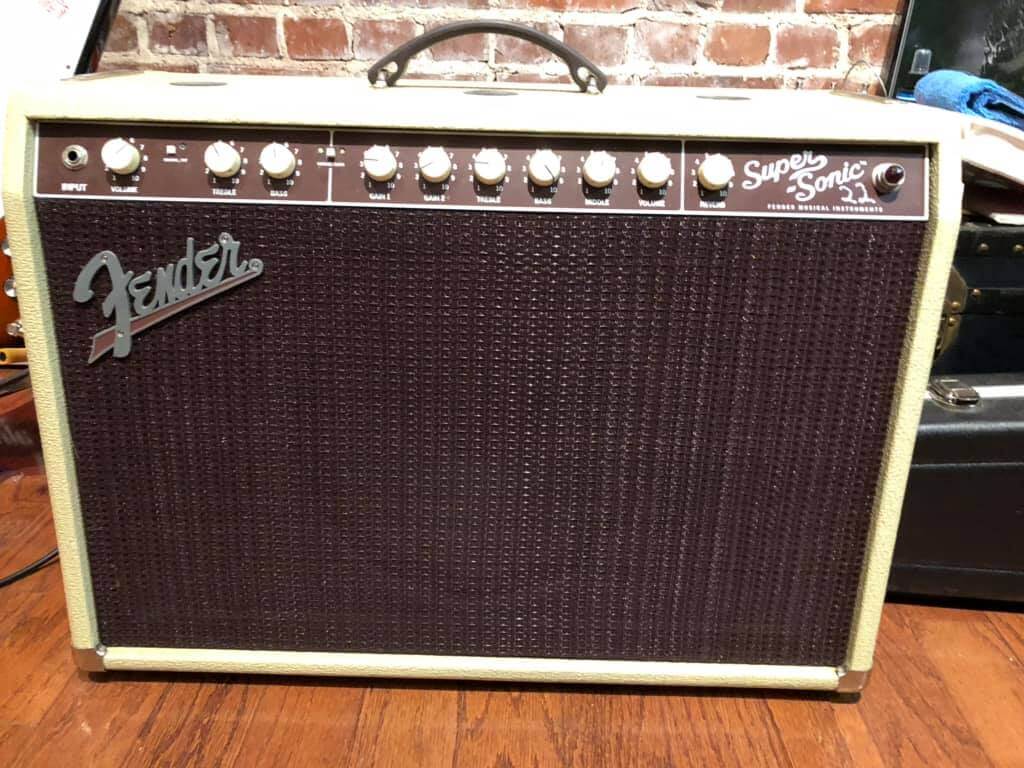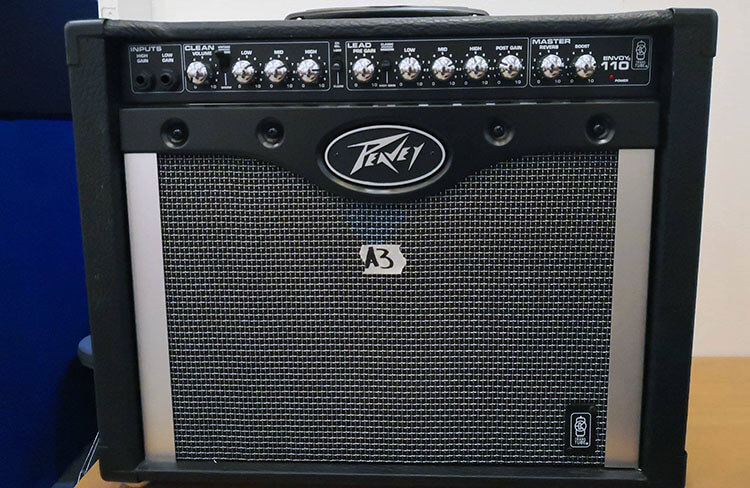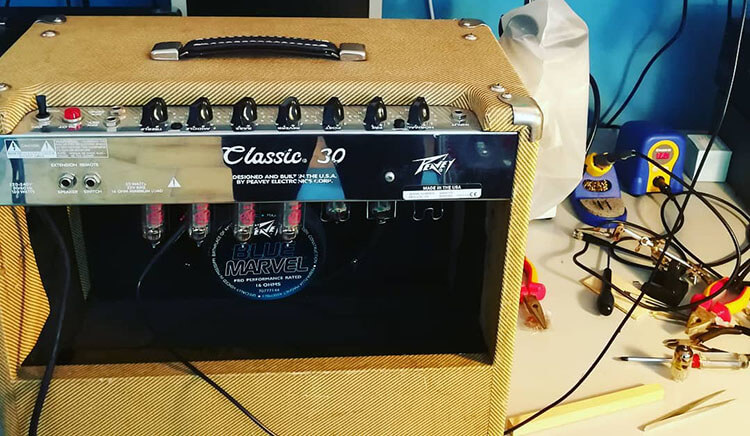You might have noticed an amp hum with no input, and you’ve no clue what is causing this. There could be single or multiple reasons, such as a ground connection going bad, or there might be dirty power, or the lighting must be fluorescent.
Besides these reasons, other minor issues in the components could lead to a humming sound. The capacitor, cable issue, and ground loop issues are also regular.
Whatever the reason, I’ll dive deep into the reasons and find out the exact cause and the type of hum the amplifier is making. Tag along to learn more!
What Causes Amp Humming Without Input?

Your first step is to find the exact reason to find the problem. So, in this section, I’ll go through all the possible causes.
Reason #1: Bad Ground Connection
The primary culprit could be a cable, specifically the ground loop or connection. You will find it around the input option.
Sometimes you might need to plug in more than two components into the outlets. Because of that and all the different frequencies, there may be ground noise.
Or sometimes, there are some issues you might discover ground lift control area. You need to inspect the exact position of the problem and which part is causing this situation.
Reason #2: Dirty Power
Another possible reason could be the dirty power. Sometimes, a cheap or incompatible power supply could be the center of the entire environment. Or sometimes, a broken, weak cable could cause providing dirty power.
Even if you have a power conditioner, there might be other reasons. And, sometimes, the power conditioner could go wrong too.
Another reason could be that all the cables are joined together, and the frequency is interfering, thus causing a hum.
Reason #3: Fluorescent Lighting
Next, you must consider inspecting if there is any outside interference, such as fluorescent lighting. Because sometimes, when the amplifier and other devices, such as mobile phones or other devices, are close, there could be signal interference.
The fluorescent lighting could interfere with the amplifier’s signal, sometimes blocking it. As a result, you could hear a hum from that.
Reason #4: Bad Component
As for the bad components, the first component that could go wrong is the amplifier itself. Sometimes, when multiple components are connected to the power source, there might be a power surge.
As a result, the power surge could damage the amplifier somehow. Another thing included is another connected cable or components related to the amplifier, such as a capacitor. There could also be a loose or bad connection between the capacitor and the amplifier.
How to Diagnose Humming With No Input

Now, there could be a single or multiple causes behind the humming. And you need to find the exact reason and start fixing them one by one. As a process, I’ll eliminate the causes one by one.
Your first step is the check the settings on the amplifier. Here are the steps you need to follow.
- Turn up the volume to the max.
- Again, turn it down to zero. If you hear the slightest noise or hum when it is max or zero, the amplifier has a problem because it should be pin silent at those moments.
- Inspect if the EQ settings are put into default. The settings shouldn’t be to the max.
- If the fluorescent lighting is the cause, take away the cell or smartphones, and turn down the lights to see whether there is a hum.
- Check whether the pick-up is a single coil or not.
- If the ground loop causes the hum, you must plug the device into the multiplug. Then, unplug the other equipment that is plugged into the multiplug.
- If the previous method doesn’t work, and there is still a humming noise, the amplifier is the apparent problem.
Doing these would help you find out the apparent problem.
Troubleshooting Tips for Amp Hum with No Input
Most of the problems have straightforward solutions. As you already know the exact cause, you need to follow a few steps for each reason and fix it within a few minutes.
#1 Ground Connection Fix: I’ll start with the first possible fix. If it’s related to a ground connection or ground power problem, you must ensure that there is only a single power source for all the equipment.
Besides that, another thing is to ensure that the power source is stable and provides electricity simultaneously. And, of course, the outlet should be a single source for all the equipment.
#2 Cleaning the Input Area: You need to clean the inputs. You can use a contact remover to remove any corroded parts or dust. Besides, you need to plug the input in the lead too. That should eliminate the possibility of any connection problem in the input area.
#3 Fix the Components: When you are done with the previous components, the next part is to check the components that could go wrong. You need to replace them or either repair them.
Check whether the volume button, gain, and controls, such as EQ and pedal inputs, must be corrected. If possible, repairing might fix the problem. If not, you might need to replace them with new ones.
#4 Dirty Power Fix: Another cause I discussed is the dirty power-related issue. In that case, the effective and efficient solution is a power conditioner. What a power conditioner does is filter outs the noise. Using a power conditioner is useful when you don’t have complete authority over the controls.
#5 Ground Loop Issue Solve: Another issue was the ground loop. To fix that, you need a ground lift switch. Most of the equipment has a pre-installed ground lift switch. Getting one would be a wise investment if you don’t have any.

#6 NGP Settings: Another fix I’ll discuss is the NGP control settings. As you know, noise gate pedals have three different settings. The first one is a threshold. When you have a low threshold, it will remove all the humming or noise. On the other hand, when you put it to a high threshold, it will only remove the grating parts.
The following setting is decay. The low decay settings make the sound more robotic, whereas the high decay makes the sound softer.
Last but not least, the third setting is the reduction. And it is a game changer. When you set the reduction high, you will hear no hum.
#7 Capacitor Issue: As you know, you will find four types of different capacitors. If the issue was related to dirty power, the power supply filter capacitor could go wrong and need to be replaced.
In that case, you will find many options in the market. You can get a 30×50 2PC 63V Power capacitor, or a dual ac 65V is also a good choice.
#8 Cable issue: The cables could be disorganized, and it would be better to use a cable management rack for that purpose. You can arrange the wires so that they would interfere with the frequencies and won’t cause further cable-related issues.
#9 Get a Surge Protector: As discussed if the issue was related to a power surge that could cause the amplifier to went wrong, the obvious solution is to get a surge protector.
#10 Replace the Amplifier: If nothing works, the apparent problem is the amplifier. In that case, you need to replace the amplifier, which will solve the issues.
Frequently Asked Questions (FAQs)
Is It Normal For Guitar Amps Hum?
Yes, it’s normal for guitar amps to hum. But if you find the noise or humming annoying, there could be issues related to the ground loop, dirty power, or some bad components causing that constant noise.
What Causes Subwoofer Humming?
There could be a single or multiple causes behind the subwoofer humming, such as ground connection issues, cable interference, the amplifier going bad, or an issue with the voltage difference between the equipment.
Can Capacitors Cause Hum?
Yes, capacitors can cause hum. If there is an issue related to dirty power, the humming could be connected to capacitors being gone wrong. The power supply capacitor must be repaired or replaced to fix the problem.
Final Words
That was everything from me about “Amp hum with no input.” I went through every possible reason, how to find the cause, and troubleshoot the problem.
I hope this post helped to fix your problem and that you can quickly get back on track. Let me know if you have any more queries about the amplifier or humming problems.
Until then, good luck!
